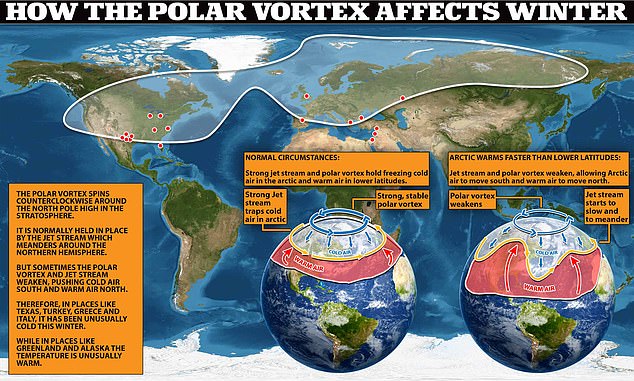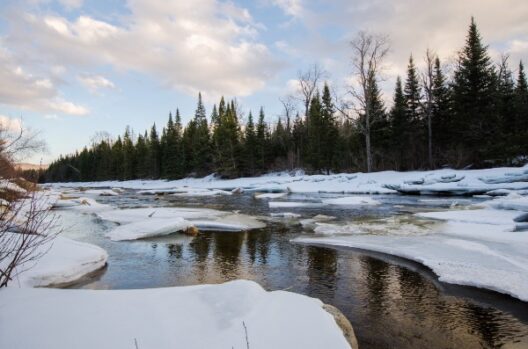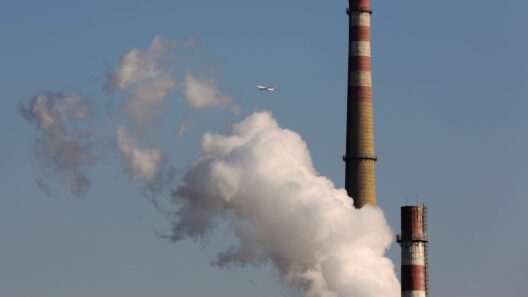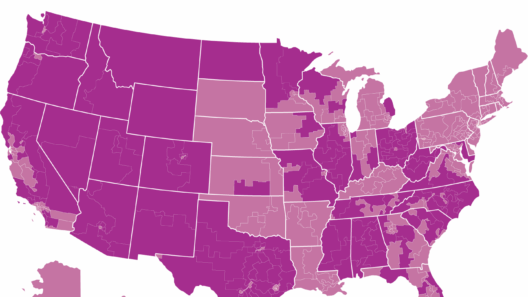As we traverse the complex landscape of climate science, one might pose a seemingly paradoxical question: how can a planet gradually warming from anthropogenic influences simultaneously yield colder winters? At first glance, the concept appears counterintuitive. In a world where temperatures steadily rise, should we not expect milder, more temperate winters? Yet, emerging evidence suggests that the intricate interplay between climate dynamics could indeed lead to unexpected phenomena, including frigid winter temperatures. This contradiction merits a deeper examination.
To explore this issue, one must first comprehend the fundamental workings of the Earth’s climate system. Climate change refers primarily to the long-term changes in temperature and weather patterns. It is primarily driven by the accumulation of greenhouse gases in the atmosphere, mainly due to human activities such as burning fossil fuels, deforestation, and industrial processes. In essence, we have unleashed a tidal wave of carbon emissions that intensifies the greenhouse effect, leading to overall warming. However, the ramifications of this warming are not as linear as one might assume.
The Arctic region reveals pivotal insights into this perplexity. As global temperatures rise, the Arctic is warming at a rate approximately twice as fast as the global average. This rapid warming has led to a significant reduction in sea ice, affecting the polar jet stream—a fast-flowing river of air that influences weather patterns across the northern hemisphere. Traditionally, a strong polar jet stream tends to keep frigid Arctic air bottled up, resulting in milder winters in Europe and North America. However, as the Arctic continues to warm and lose ice, the jet stream weakens and becomes more erratic.
What follows is a curious scenario: a weakened jet stream can create prolonged patterns of extreme weather. Instead of a consistent flow, the jet stream may develop deep troughs and ridges, allowing cold Arctic air to plunge southward into regions that typically experience temperate winters. Consequently, parts of the United States and Europe can experience sudden and intense cold spells, leading to severe winter conditions. This phenomenon indeed poses a significant question: can climate change, which ostensibly brings about warming, simultaneously manufacture the conditions for colder winters?
To delve deeper into this discussion, consider the term “blocking patterns.” This meteorological occurrence relates to high-pressure systems that can stall the movement of the jet stream. When these systems set up, they can cause Arctic air masses to descend into lower latitudes, resulting in exceptionally cold temperatures. In essence, climate change can indirectly facilitate a greater incidence of these blocking patterns due to the oscillations in temperature between the polar regions and the mid-latitudes. This intricate relationship intricately weaves warming and extreme cold together in a complex tapestry
Additionally, societal perception plays a paramount role in this complicated narrative. Climate change is too often framed in binary terms, perceived simply as a relentless march towards warmer conditions. However, the reality is far more nuanced. Public understanding often falters in grasping the multifaceted nature of climate dynamics, leading to skepticism regarding climate science. This skepticism can undermine critical policy developments and discourage proactive measures. Thus, raising awareness about the connection between warming and erratic winter weather is essential, creating a unified understanding of these interconnected processes.
Graphical representations of temperature anomalies can further elucidate these complex relationships. Mapping temperature variations over decades reveals stark and sometimes alarming trends. When examining temperature records, we observe that while average global temperatures rise, localized cold extremes underscore the shifting climatic paradigm. Such visuals can serve as compelling reminders that a blanket statement like “global warming leads to uniformly warmer winters” is misleading.
Moreover, the implications of these cold snaps can extend beyond mere discomfort. Ecosystem dynamics are intricately linked to seasonal weather patterns. Species migration, reproduction cycles, and even food webs can be dramatically affected by sudden cold weather events. Agriculture depends heavily on predictable seasonal patterns. Unexpected cold spells can wreak havoc on crops, leading to food scarcity and price volatility. Thus, the paradox of warming leading to colder winters not only alters weather, but it could potentially impact food security and economic stability.
In light of these complexities, the challenge before society becomes more pronounced: how should we prepare for the unpredictable consequences of climate change? Rather than disengaging from the climate crisis due to the paradoxical nature of colder winters, proactive adaptation strategies must be prioritized. Urban planning should account for temperature volatility, infrastructure should be fortified, and agricultural practices should become more resilient. Furthermore, public policy should evolve to encompass education on these multifaceted climatic interactions, promoting informed discourse.
The paradox of climate change causing colder winters is a reflection of the intricate and dynamic nature of our planet’s climate system. It implores us to challenge our assumptions about global warming and confront the looming uncertainties it brings. As we acknowledge these complexities, it becomes evident that a holistic understanding is imperative. The climate crisis demands attention to both warming and its potential for cold extremes, ultimately reinforcing the urgency of collective action to mitigate climate change’s pervasive effects.
In summary, while it may seem contradictory at first, climate change can indeed yield colder winters through a complex interplay of atmospheric phenomena. Rather than seeing climate change as a simple linear progression, we should recognize the multifaceted challenges it poses. Understanding and addressing these paradoxes is vital as we grapple with the realities of a warming planet and prepare for its unpredictable consequences.







